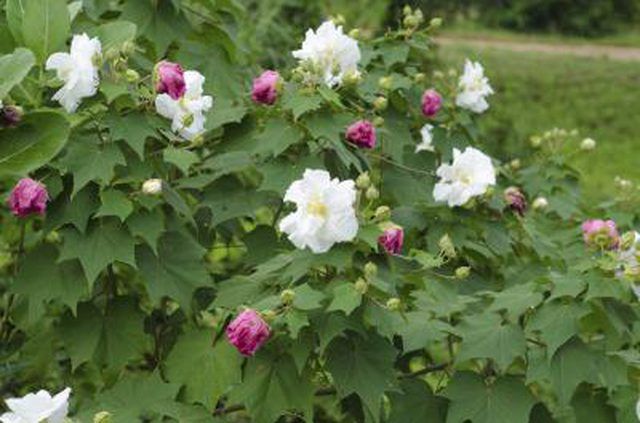Bulbs
Flower Basics
Flower Beds & Specialty Gardens
Flower Garden
Garden Furniture
Garden Gnomes
Garden Seeds
Garden Sheds
Garden Statues
Garden Tools & Supplies
Gardening Basics
Green & Organic
Groundcovers & Vines
Growing Annuals
Growing Basil
Growing Beans
Growing Berries
Growing Blueberries
Growing Cactus
Growing Corn
Growing Cotton
Growing Edibles
Growing Flowers
Growing Garlic
Growing Grapes
Growing Grass
Growing Herbs
Growing Jasmine
Growing Mint
Growing Mushrooms
Orchids
Growing Peanuts
Growing Perennials
Growing Plants
Growing Rosemary
Growing Roses
Growing Strawberries
Growing Sunflowers
Growing Thyme
Growing Tomatoes
Growing Tulips
Growing Vegetables
Herb Basics
Herb Garden
Indoor Growing
Landscaping Basics
Landscaping Patios
Landscaping Plants
Landscaping Shrubs
Landscaping Trees
Landscaping Walks & Pathways
Lawn Basics
Lawn Maintenance
Lawn Mowers
Lawn Ornaments
Lawn Planting
Lawn Tools
Outdoor Growing
Overall Landscape Planning
Pests, Weeds & Problems
Plant Basics
Rock Garden
Rose Garden
Shrubs
Soil
Specialty Gardens
Trees
Vegetable Garden
Yard Maintenance
How to Grow a Confederate Rose
How to Grow a Confederate Rose. Best grown in U.S. Department of Agriculture plant hardiness zones 7 to 9, the confederate rose (Hibiscus mutabilis) features large, showy flowers that start off white but quickly change to deep pink or reddish pink, with a blueish cast near the end of their bloom cycle. Especially enchanting is the fact that these...

Best grown in U.S. Department of Agriculture plant hardiness zones 7 to 9, the confederate rose (Hibiscus mutabilis) features large, showy flowers that start off white but quickly change to deep pink or reddish pink, with a blueish cast near the end of their bloom cycle. Especially enchanting is the fact that these cycles happen on different parts of the large bush simultaneously, so that the plant appears to feature multi-colored blooms.
Things You'll Need
Spade
Compost
Mulch
Hose or drip-irrigation system
Pruning shears
Bleach or rubbing alcohol
Paper towels
Site the planting area where the confederate rose will receive full sun, or dappled shade in the hotter part of its range. The confederate rose is best grown as a specimen tree or large shrub, but if planted in a border should have at least 5 feet on either side.
Prepare the planting area. Although confederate roses adapt well to most soil conditions, working a 2-inch layer of compost into the soil will help improve the nutrition and texture of the soil. Work the compost about 12 inches deep throughout an area that's about 100 feet square. This will improve the nutrient level and soil texture throughout the eventual growing zone.
Dig a hole that is about the depth of the shrub's root ball, and at least twice as wide. Set the confederate rose in the hole, and backfill the hole with soil. Press down on the soil to remove airpockets, and water the area deeply.
Mulch the area around the confederate rose with a 2-inch layer of wood chips or other organic material. Keep the mulch several inches away from the base of the shrub itself.
Check the soil around the confederate shrub daily in the first few month after planting. To get them off to the best start, young shrubs need consistently moist soil during their first growing season.
Water about every two weeks as the confederate rose matures. Shrubs should be watered to a depth of about 2 feet. If you are not able to water as often or as deeply as recommended for shrubs like the confederate rose that prefer moderate watering, take heart. Confederate roses are somewhat drought tolerant, although they may experience some wilting in scorching heat and no water.
Prune the confederate rose, if size is a concern. Many gardeners only lightly shear the shrubs for a more even silhouette. It is possible, however, to cut a to a confederate rose to a height of 12 inches during dormancy, which will allow it to grow to a moderate and bushier height the following season. Sterilize the shears after pruning by misting them with, or dipping them into, a cleaning solution such as bleach or rubbing alcohol. Wipe them dry after their treatment.
Spread a 1- to 2-inch layer of compost around the shrub each spring, starting from a few inches away for the base to under the plant's outermost branches. This action will continue to improve the growing environment as the confederate rose matures.
Tips & Warnings
Despite its common name, the confederate rose is not an American native, but instead hails from China. It received its "confederate" nickname due to the flowers' change from white to deep pink over a two- or three-day period, which reminded some poetic souls of a white flower gradually stained by a dying soldier's blood.
Hibiscus mutabilis is also known as the rose mallow, cottonrose hibiscus and Dixie rosemallow. It is not technically a member of the rose (Rosa spp.) family.
Give your confederate rose plenty of room to grow. When mature, it can reach sizes of 15 feet tall by 10 feet wide.